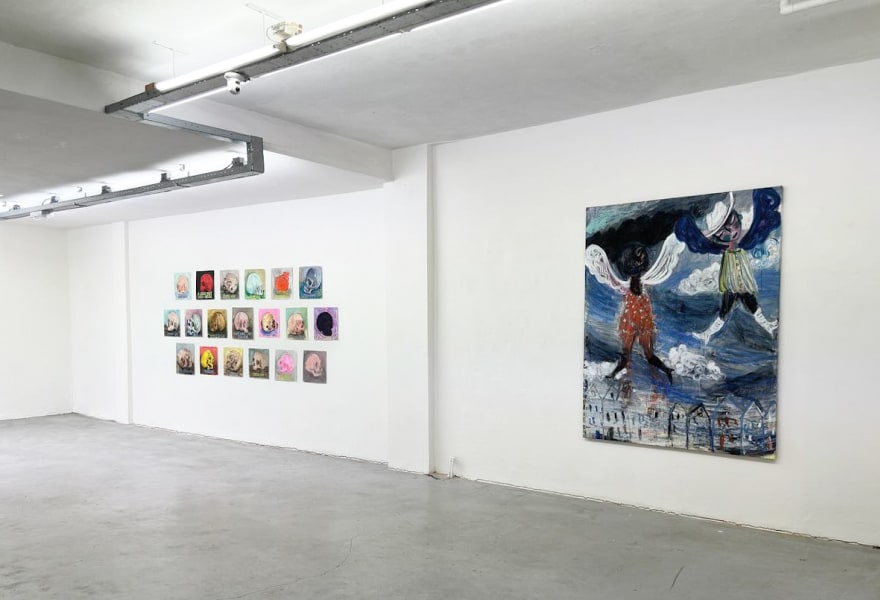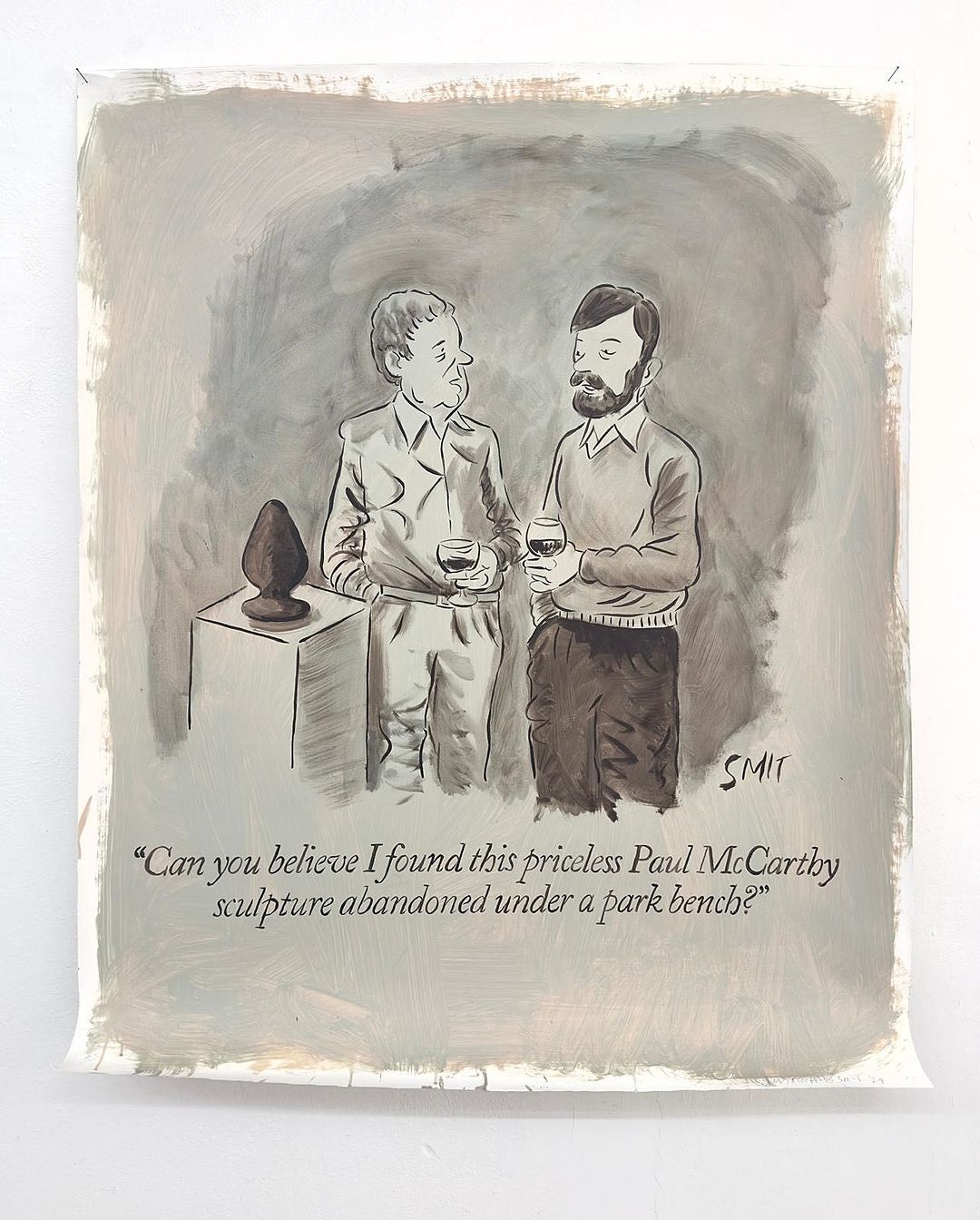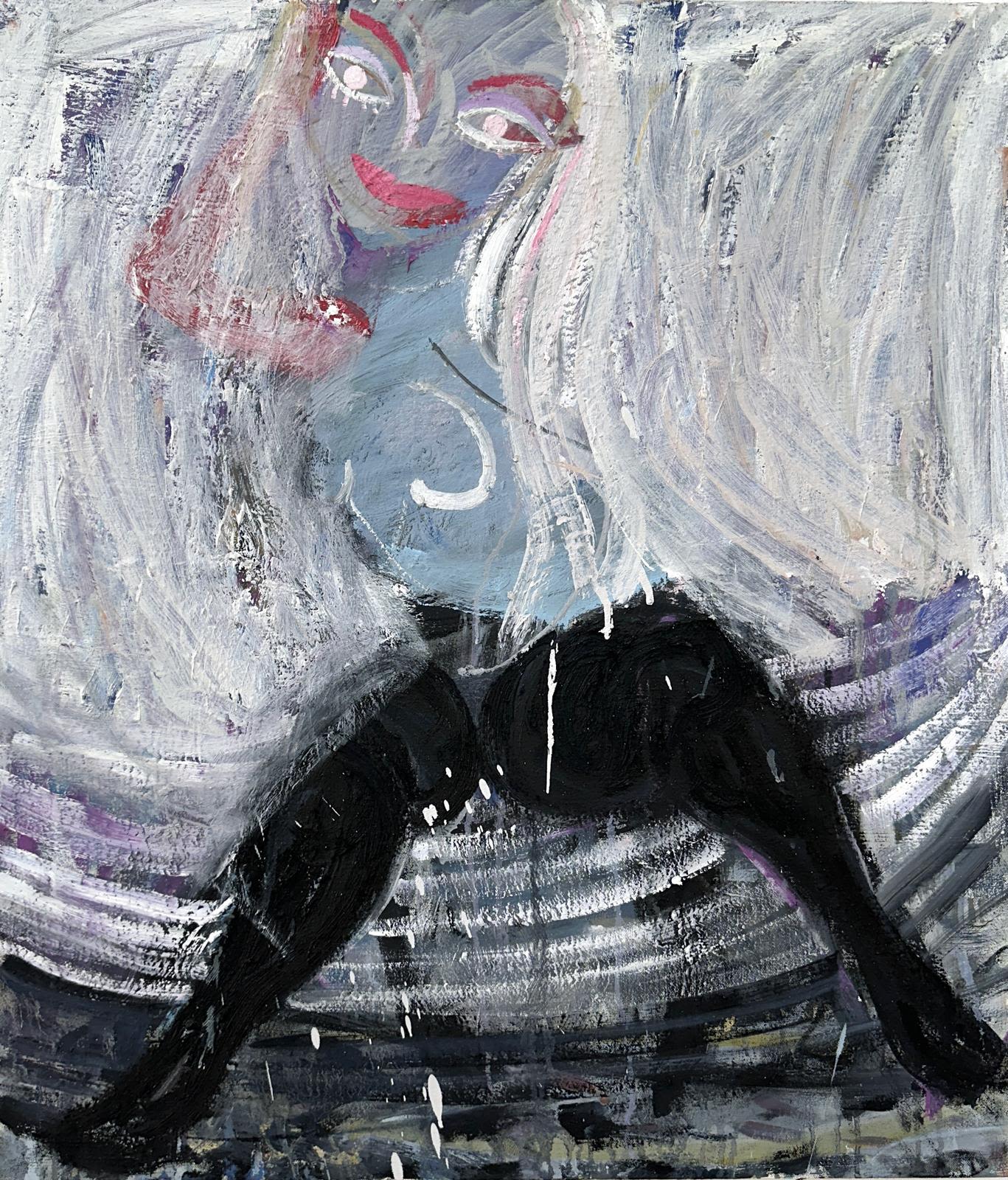29 october 2024, Flor Linckens
The absurdist and grotesque universe of Gerben Mulder and Guy Richards Smit
Until 30 November, Frank Taal Gallery in Rotterdam presents 'Speaking in Tongues', a duo exhibition featuring works by Gerben Mulder and Guy Richards Smit. Both artists have a strong connection to the Netherlands, though they live and work in New York. While their artistic practices differ greatly, they share a fascination with the absurdity of human existence.
Guy Richards Smit was born in New York in 1970 to a Dutch father and Dutch-American mother, both professors. He studied at the Rietveld Academy, Parsons School of Visual Arts and Mason Gross School of the Arts. Smit’s work delves into themes such as desire, narcissism, power, failure and death, expressed through various media, including cartoons, performances, paintings, video and music. His practice reflects a sharp perspective on human nature, culture, zeitgeist, capitalism and a microcosm of these — New York’s art scene. Smit’s work draws inspiration from pop culture, particularly sitcoms, comic books, stand-up comedy and rock operas, as well as from philosophy and politics. At Frank Taal Gallery, Smit presents several of his acclaimed cartoons, which have appeared in The New Yorker, Hyperallergic and Artnet. In these playful, single-frame “gag cartoons”, he combines (occasionally biting) humor, self-mockery and social critique with nuance, prompting reflection on the absurd and often contradictory nature of humanity and, by extension, our society. Some of these cartoons are presented here as paintings on monochrome backgrounds.
In addition, Smit presents works from his series "Mountain of Skulls", inspired by his visit to the Sedlec Ossuary in Kutná Hora, Czechia. This "Bone Church", with 40,000 skeletons arranged into eerie chandeliers and other decorations, serves as a haunting memento mori, silently testifying to mortality. Smit experienced a marked contrast between the overwhelming confrontation with death and an unexpected sense of emotional detachment. To process what he saw and to give each skull a personal resonance, he created a series of 400 works on paper, each skull titled to suggest a unique, fictional personality.
Smit’s work has been exhibited at MoMA, the Hirshhorn Museum, the Havana Biennale, Dublin Contemporary, the Flag Art Foundation and Centre Pompidou. Earlier this year, he led a workshop for The Art Students League of New York.
Gerben Mulder was born in Amsterdam in 1972. For many years now, he has divided his time between New York and Rio de Janeiro. After briefly studying at the Academy of Fine Arts in Prague, he continued developing his craft as a self-taught artist. His paintings have a psychological depth, often characterised by expressive, surreal and even grotesque figures, animals and floral still lifes. These mysterious, energetic and subtly unsettling compositions are dominated by somber colours, such as black and grey, lending them a hallucinatory quality as if they emerged directly from a dream or nightmare. At the same time, Mulder imbues his work with a touch of humour. He draws inspiration from the rawness of city life and the darker sides of human nature. In this exhibition, his paintings, in various formats, are accompanied by a series of drawings and other works on paper, ranging from sketch-like to highly detailed.
Mulder’s work was shown at the 1st Liverpool Biennale, the Museum of Contemporary Art in Tucson (where his work is part of the collection), Kunstverein Cologne and Boston University Gallery. Additionally, his paintings are regularly displayed at fairs like Art Basel, The Armory Show and Frieze, presented by his gallery Fortes D’Aloia & Gabriel in São Paulo and Rio de Janeiro. His work has been featured in publications such as The Guardian, The New York Times and FRIEZE magazine.
The renowned New York art critic Roberta Smith, who recently retired, wrote about both artists in The New York Times. She described Smit’s work as “a tour de force that showcases his considerable talents for satire, stand-up, endurance art and painting.” She characterised Mulder’s work as “a kind of faux-retro-Modernism-redux”, noting its “unquestionably lively" qualities, "although you may not necessarily want to turn your back on them”, given the subtly unsettling nature of his scenes.




